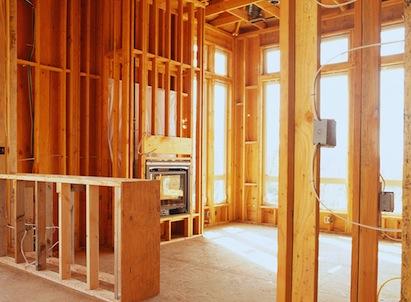5 proven ways to optimize framing
Advanced framing can save materials and time while boosting your homes’ efficiencies. Here are five techniques that can be adopted independently.
By Bob Clark, APA-The Engineered Wood Association
July 27, 2012

As builders look for ways to cut costs while meeting ever-more-stringent energy codes, many are turning to advanced framing methods. Also known as “optimum value engineering (OVE),” advanced framing techniques optimize material usage to cut down on waste, eliminate redundancies, reduce labor, and increase a home’s energy efficiency, while maintaining structural integrity.
Read about each concept at: http://www.housingzone.com/building-technology/5-proven-ways-optimize-framing
12 Ways to Stand Out from Your Competition
As the market slowly recovers, standing out in the crowd is more important than ever.
By
Claire Easley
Be the first to comment
Share
As the home building industry emerges from the long, dark tunnel of recession and comes blinking into the light, one thing is clear enough to Tom Gebes, owner of Denver-based workflow management software company BuilderMT: The world is a much different place than it was in 2006. “We’re an Internet-based society now,” Gebes says, and that has implications for every part of the home building process, from how people shop to what they expect their home to include and how they expect it to function.
Adapting to this new reality will present a variety of challenges. In an industry where so much of what’s offered is strikingly similar, Gebes says, the opportunity to differentiate by finding out exactly what a builder’s target market is looking for in today’s market and providing it can offer a significant sales advantage. “Builders have the tendency to work from the same songbook,” Gebes says. “They’re working from the same group of plans and the same products, making some adaptations to the elevations or some other minor changes. They’re visiting each other’s models and communities. When everyone is competing for the same buyer, builders have to differentiate themselves.”
That differentiation, he says, should extend both to the types of homes produced and the way builders are producing and selling them. While the exact changes necessary will vary by location, target buyer, and other factors, Gebes offers 12 ideas to get the brainstorming juices flowing.
1. Many builders are redesigning their product to fit the “new” buyer. Have you done research for your area on what the buyer is looking for? Gebes suggests incorporating surveys into your website and training sales people to question prospects about what their must-haves are.
2. How are you improving your internal organization? Lowering costs and finding improved efficiencies are only one way; what are you doing within your sales and marketing departments?
3. If there are only two ways to make money, decrease costs or increase sales, why not do both?
How do you get there? What are the steps involved?
4. Establish a business and technology plan that includes product differentiation.
5. Make sure you have a solid web presence and visit your site often to make sure you are actively telling the right message.
6. Use social networking tools such as Twitter, Facebook, and LinkedIn.
7. Deploy a sales CRM system to manage leads and track them through the buying process.
8. Train your sales department to use technology as a tool to find and close business.
9. Make sure that your processes move you from the sale and marketing step to the purchasing and scheduling step without any additional effort from your staff.
10. By evaluating your sales to construction process and implementing the right processes and the right technology, you keep your overhead low and your productivity high.
11. Do not forget about your customer service and warranty. Make sure every buyer feels like they are the most important. Work with your trades to cut down on warranty call backs and solicit referrals from your happy buyers.
12. Post these referrals on your website.
Claire Easley is a senior editor at Builder.
Learn more about markets featured in this article: Denver, CO.
Builder safety: ladder falls
Ladder falls are a frequent construction accident that can result in serious injuries, but such falls are also largely preventable.
August 01, 2012 /24-7PressRelease/ — Many people may assume that tougher safety regulations and new safety technologies have made construction accidents an issue of the past. However, construction accidents are unfortunately a common occurrence, and more construction workers die from falls than from any other construction-related injury. In fact, falls account for one-third of work-related deaths suffered by construction workers.
Read more at: http://uspolitics.einnews.com/247pr/295098

More about Williston, N.D.’s oil-fueled housing boom
The one place they can’t build homes fast enough
North Dakota’s increased oil production creates dire housing need…
CHICAGO (MarketWatch) — People in most housing markets are elated about trends showing that home prices are on the way up and a housing recovery could be underway.
If you’re living in parts of North Dakota, however, you’ve lived with rising home prices for a while now. Moreover, the shortages in supply are making it a challenge to even find a place to live.
Read More Here:
http://www.marketwatch.com/story/they-cant-build-homes-fast-enough-here-2012-07-30?link=home_carousel

Which States Have Worst Underemployment?
California ain’t having a great summer. Its economy remains crippled by the housing bust. Its unemployment rate is the nation’s third-highest, after Nevada and Rhode Island. And officials in four of its cities — Stockton, Mammoth Lakes, Compton and San Bernardino — recently filed or indicated they might file for bankruptcy protection. Well, here’s one more not-so-golden medal for the Golden State: It has the worst involuntary-part-time-worker problem. Read more here:
http://blogs.wsj.com/economics/2012/07/30/which-states-have-worst-underemployment/


